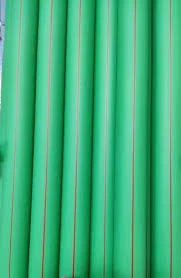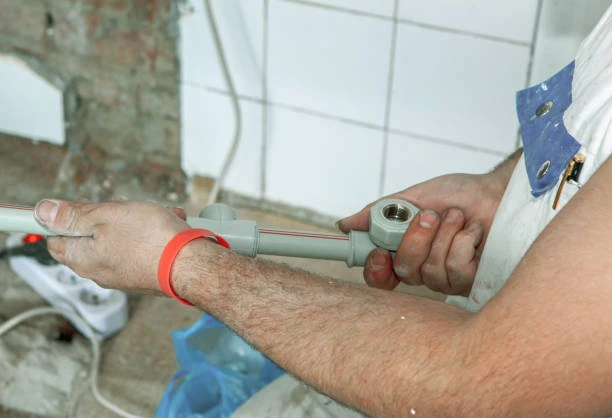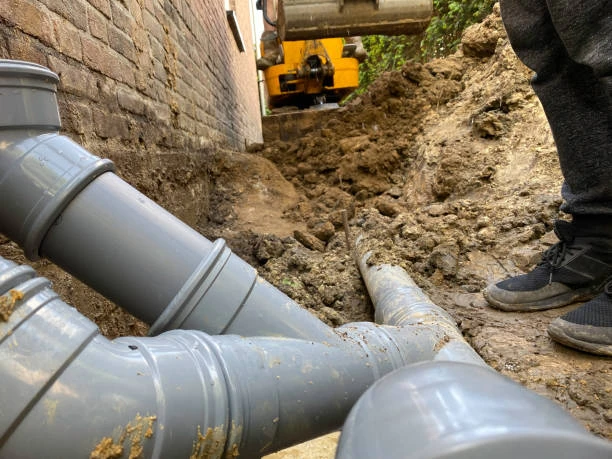PPR (Polypropylene Random Copolymer) pipe EN 15874 are widely used in plumbing and fluid transport systems due to their favorable properties. However, like any material, they come with both advantages and disadvantages. Below is an overview of the benefits and drawbacks of using PPR pipes.
Advantages of PPR Pipe
- Durability
- PPR pipes are extremely durable, with a lifespan of over 50 years under normal conditions. They are resistant to corrosion, scaling, and chemical damage, which ensures long-term reliability in various applications.
- Temperature Resistance
- These pipes can handle high temperatures (up to 95°C or 203°F), making them suitable for hot and cold water systems, heating applications, and other high-temperature industrial uses.
Non-Toxic and Safe for Drinking Water
- PPR pipes are non-toxic and do not leach harmful chemicals into the water supply, making them safe for transporting potable (drinking) water.
- Chemical Resistance
- PPR pipes are resistant to a wide range of chemicals, including acids, alkalis, and salts. This makes them suitable for industrial applications where chemical exposure is a concern.
- Corrosion and Scale Resistance
- Unlike metal pipes, PPR pipes do not corrode or accumulate scale, which helps maintain water quality and ensures efficient flow throughout their lifetime.

Lightweight and Easy to Install
- PPR pipes are significantly lighter than metal pipes, making them easier to handle, transport, and install. This can reduce labor costs and the time needed for installation.
- Low Thermal Conductivity
- PPR pipes have low thermal conductivity, which means they retain heat better than metal pipes. This makes them energy-efficient, especially in heating applications, as they reduce heat loss.
Leak-Proof Joints
- The use of heat fusion welding to connect PPR pipes creates strong, permanent joints that are leak-proof and do not require adhesives or additional sealants.
- Cost-Effective
- Due to their durability, long lifespan, and ease of installation, PPR pipes can be more cost-effective in the long term compared to other materials.
Disadvantages of PPR Pipe
- High Initial Cost
- While PPR pipes offer long-term cost benefits, their initial cost can be higher compared to materials like PVC or traditional metal pipes. The upfront investment may be a concern for smaller projects or low-budget applications.
- Limited UV Resistance
- PPR pipes can degrade when exposed to direct sunlight for long periods. This limits their use in outdoor applications unless they are properly protected with insulation or coatings to block UV rays.
Temperature and Pressure Sensitivity
- While PPR pipes can withstand high temperatures, they have limited tolerance at very high pressures and temperatures, especially in extreme industrial conditions. Over time, this can affect their structural integrity in such environments.
- Installation Requires Specialized Equipment
- Joining PPR pipes through heat fusion welding requires specialized tools and skilled labor. This can increase the complexity of the installation process, compared to other piping systems that use simpler jointing techniques like threading or gluing.
Brittle in Cold Temperatures
- PPR pipes can become brittle in extremely cold environments, which can lead to cracking or breakage. Additional insulation may be needed in regions with very low temperatures.
- Limited Size Range
- PPR pipes are typically available in sizes up to 110 mm, making them less suitable for large-scale industrial or infrastructure projects that require larger diameter pipes.
Conclusion
PPR pipes offer numerous advantages, such as durability, chemical resistance, and suitability for both hot and cold water systems. They are safe for potable water and provide leak-proof connections when installed correctly. However, their higher initial cost, sensitivity to UV exposure, and specialized installation requirements can be seen as disadvantages. Despite these drawbacks, PPR pipes remain a highly reliable and cost-effective option for a wide range of applications, from residential plumbing to industrial fluid transport.


















